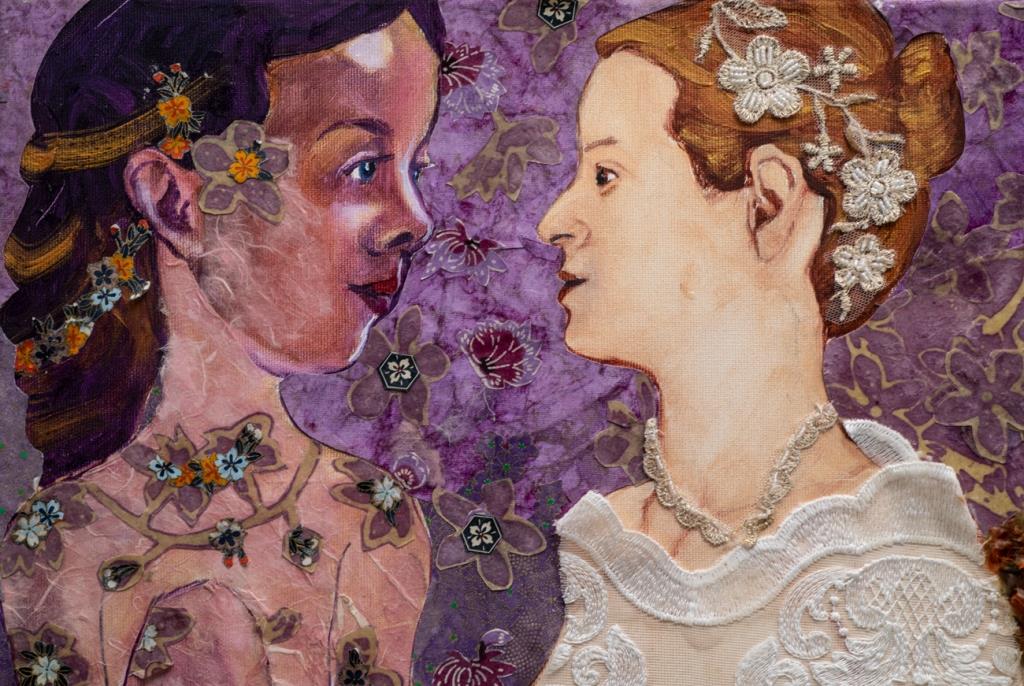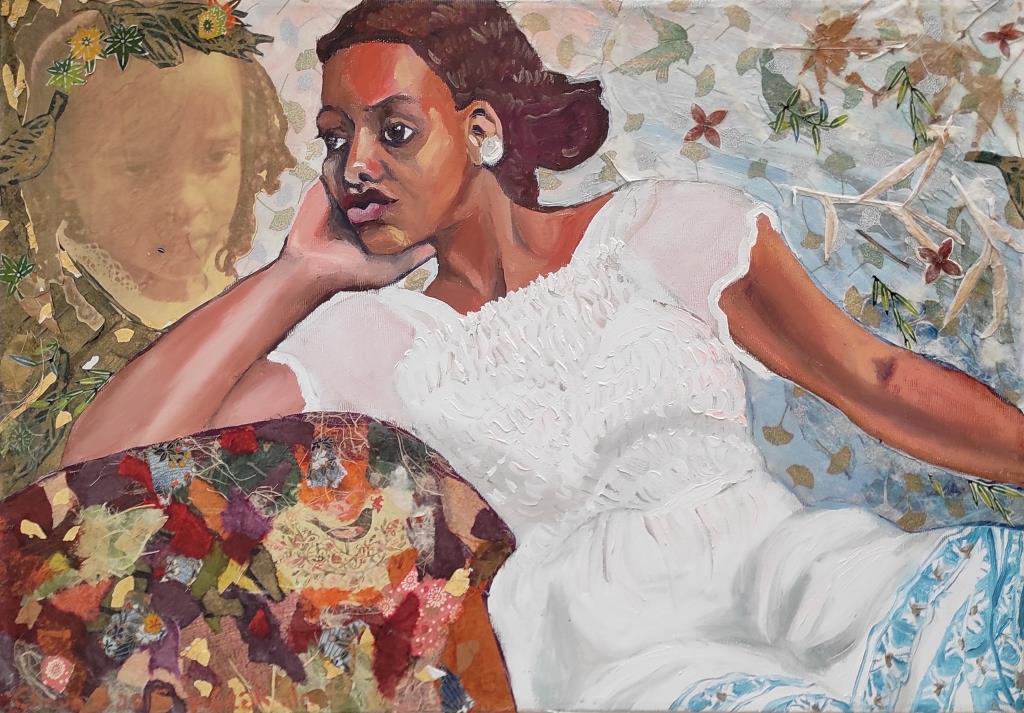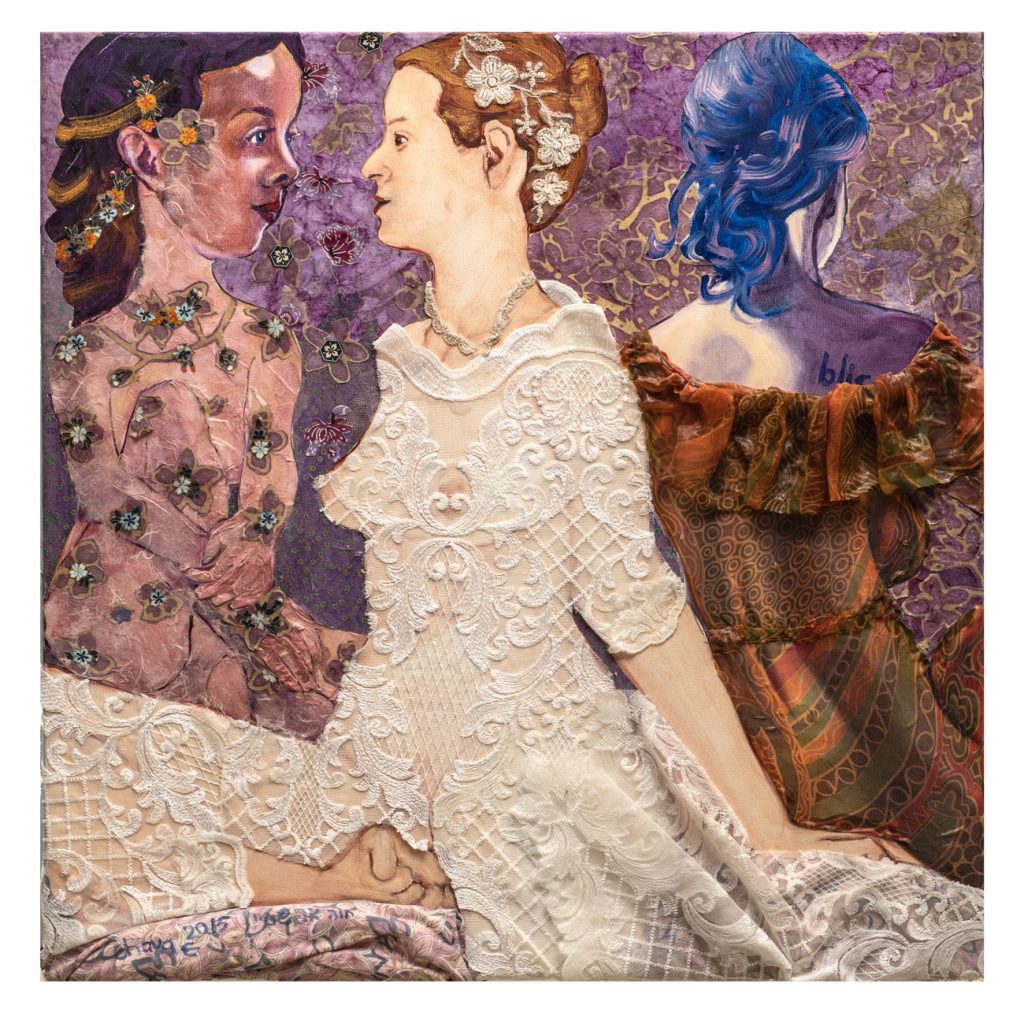
Please Follow us on Gab, Minds, Telegram, Rumble, Gab TV
Hava Epstein’s miraculous and tormented journeys are depicted in an exhibition from the female point of view of an artist and creator, depicting the journey of her life. The exhibition is the beginning of all her visual work, created over the last quarter of a century, in a text that is a story, and every story has a name.
In this current exhibition at the Tel Aviv Office Gallery, the audience is exposed to a variety of creative forms: colorful engravings, each of which depicts a different episode; portrait paintings of women in oil on canvas and in a mixed technique on canvas and paper; a chalk and watercolor painting on paper, representing a kind of self-portrait of the artist; reliefs of ceramic masks; colorful ceramic sculpture; as well as a powerful soft sculpture called Lida, sewn from transparent nylon stockings -a volumetric shape of the body of a woman giving birth, whose baby is still tied to her umbilical cord, and her wild mane of curls which fall to the gallery floor.
“The cry of the newborn before the cry of the infant is the tear of the bereaved opening as a wound. In the painting “Passing the Heart,” on the other hand, Epstein paints her portrait in a dream sense, as a mother breastfeeding her baby in stoic calm, her lush body sizzling with figures of her family members.”
These contrasts are a recurring motif in most of Epstein’s works; each of them are characterized by positive and negative themes in the same breath. Her career is likened to a time tunnel, where she flies at a dangerous speed, tirelessly and non-stop creating hundreds of works in a wide variety of visual modes of expression.

Epstein’s large house is too narrow to accommodate the abundance of overflowing works. She stores them behind glass doors in the kitchen cabinets, lest they accumulate dust. They fill all the rooms of her house: dozens of paintings on canvas and multiple sculptures, placed around the house, on the balcony, on the bookshelves, on the cabinets, on the tables, or hanging on the walls. The house has become an installation of many works of art and the visitor feels as if he is strolling through the warehouse of an art museum, boasting an impressive collection.
From the dawn of history, portraits of women have been a source of inspiration for male artists, who marveled at their beauty in depicting their beauty. Epstein’s encounter with portraits of other women and the desire to paint them raise fundamental questions about the relationship that develops between an artist and her works during and after the creation process. The answers to this question are partly found in the portraits displayed in the exhibition.

Epstein sometimes focuses on exotic women, like woman from Kazakhstan, whose authentic attire emphasizes her origins; other times she refers to the details of the dress and chooses to combine white lace fabric, like a wedding dress, or sheer fabric, printed in a leaf pattern, thus creating a collage within the work, from which the face of an African-American model is reflected.
Among Epstein’s paintings can be found a large collection of portraits of women in oil on canvas and through other mixed forms. What is special about them is the fact that these are anonymous women, and not cultural heroines or high-ranking women, who can invite the painters of the generation to document their beauty, status and importance whenever they wish. The women depicted by Epstein work for a living as painting models; they have a sad, pensive look on their faces, and sometimes they look expressionless. Their modesty prevents them from looking directly at the artist who paints them, and therefore their gaze is always tilted to the side.

This significant body of work, created in the late 20th and early 21st centuries, is unusual and unique in the entirety of Epstein’s work. Unlike most of her works, which are associated with a brave and authentic connection to exposing the journeys of her life, this time she chose to dedicate her paintings to anonymous women, thus giving place to the subject of femininity in general and the female portrait in particular.
Hava Epstein was born in Jerusalem in 1945, and still feels Jerusalemite in every aspect of her life. She lives and works in Modi’in and teaches painting in Jerusalem.
You Won’t Get Anywhere Else What You Get From CDMedia! Donate!
- “The Riddle of Joseph Ben Matityahu,” A Historical Novel Based On The Jewish Struggle Against The Roman Empire By Doron Ben Shimon
- The Indecency Of The Zionist Land Grab In Maps


